Abstract
The applicability of the silver sulfate-acid dichromate oxidation (chemical oxygen demand) method for determining the carbon-bound electron compositions of microbial cells, substrates, and metabolic by-products was evaluated. An approach for approximating the carbon-bound electron composition of microbial cells from CHN data is also presented. Ten aliphatic and aromatic carboxylic acids, 17 amino acids, and 8 sugars generally gave 96 to 101% (mainly ≥98%) recovery with 0.0625 N dichromate (digestion mixture of 10 ml of sample-10 ml of 0.25 N dichromate-20 ml of Ag2SO4-amended concentrated H2SO4). Recoveries of nicotinic acid (5%) and methionine (65%) were incomplete; arginine (125%) and two purine and three pyrimidine bases (105 to 120%) were overestimated. The validity of 0.0625 N dichromate for determining the carbon-bound electron composition of bacterial cells was supported by theoretical analysis of the carbon-bound electron composition of hypothetical bacterial cell material (defined monomer composition) and by the compatibility of elemental and dichromate oxidation-derived carbon-bound electron compositions of typical bacterial cells.
Full text
PDF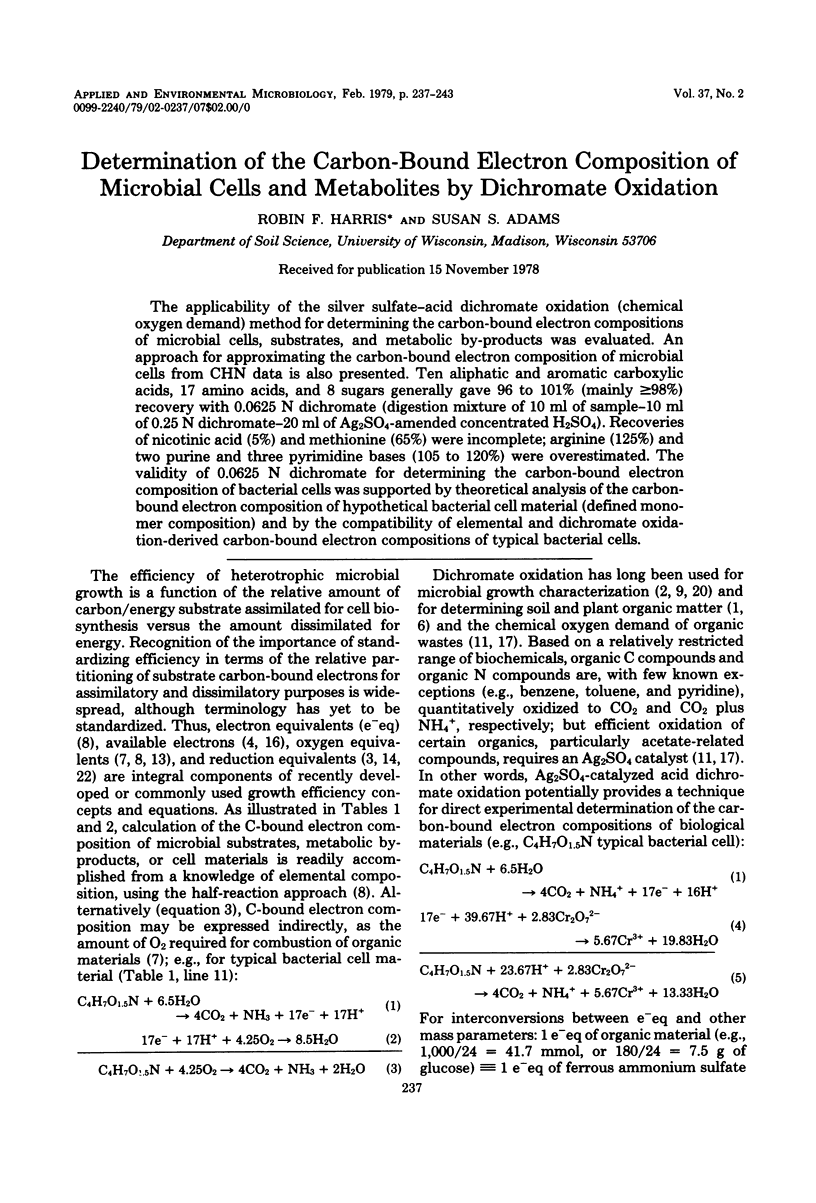
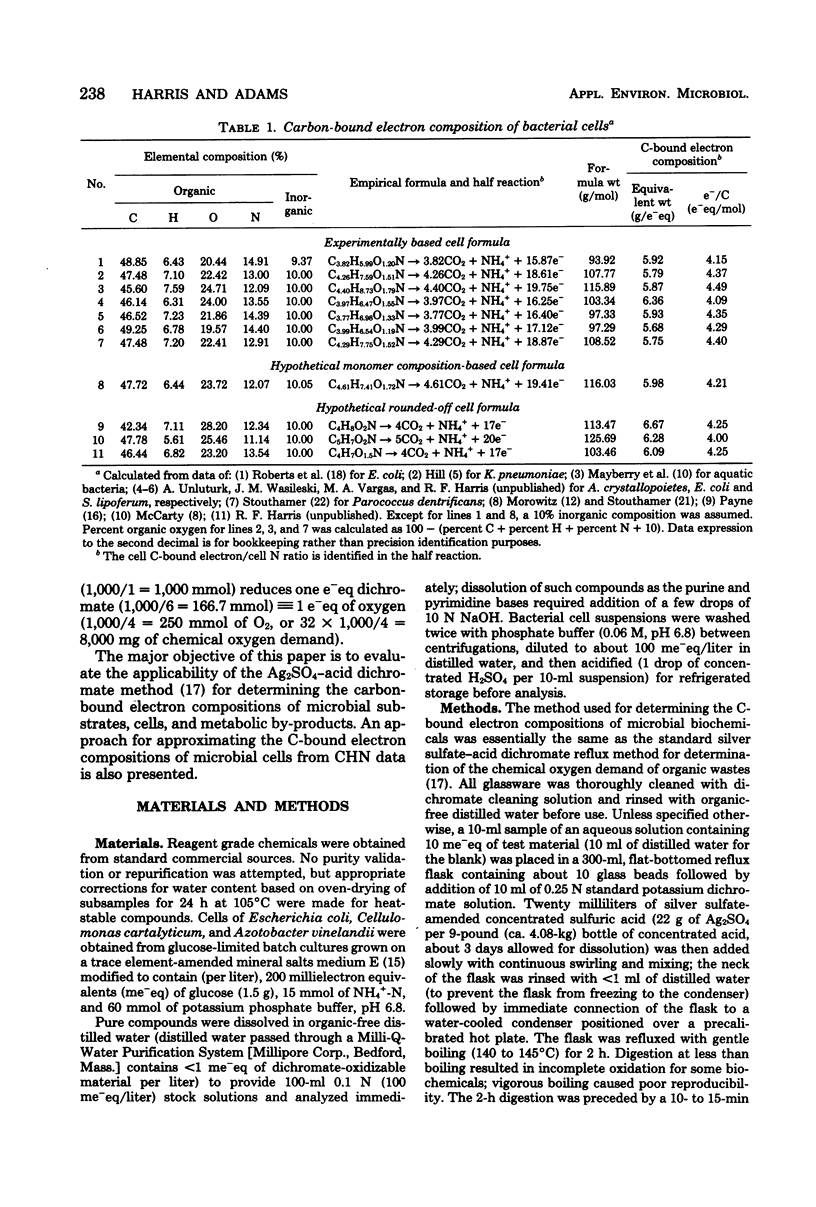
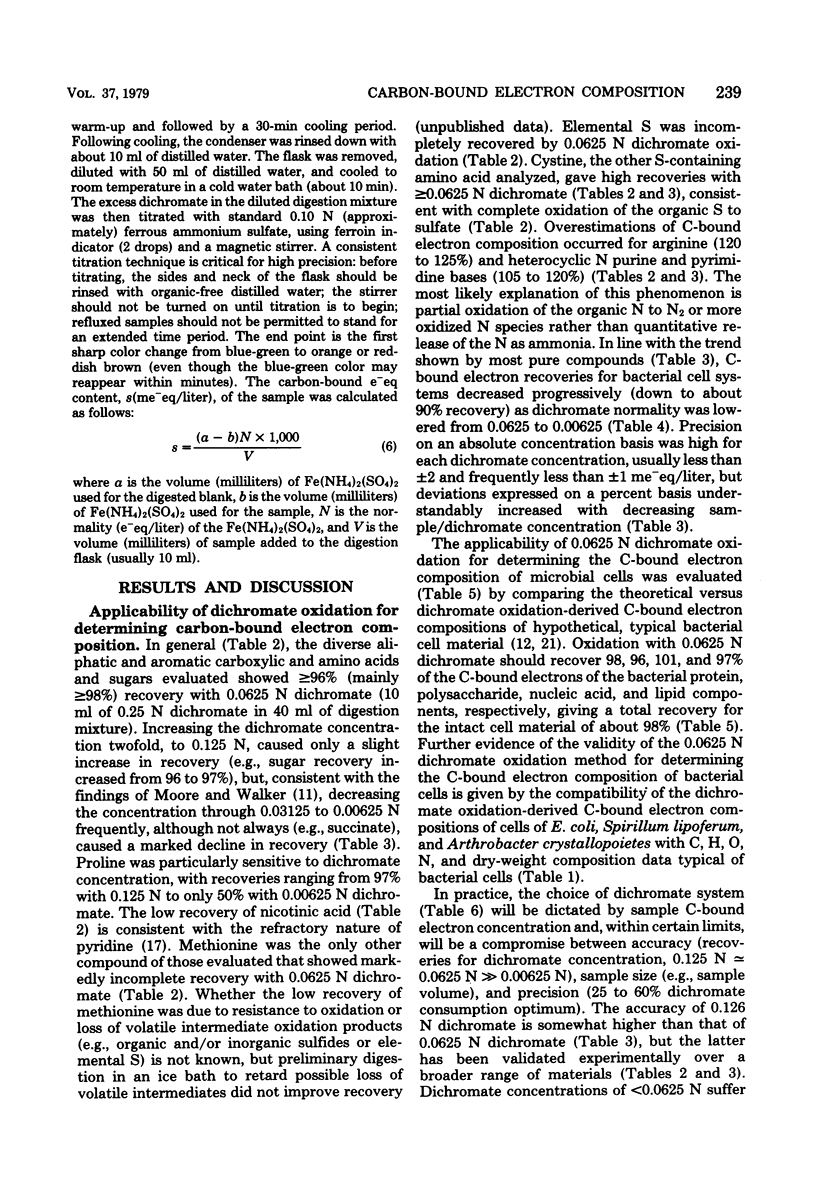
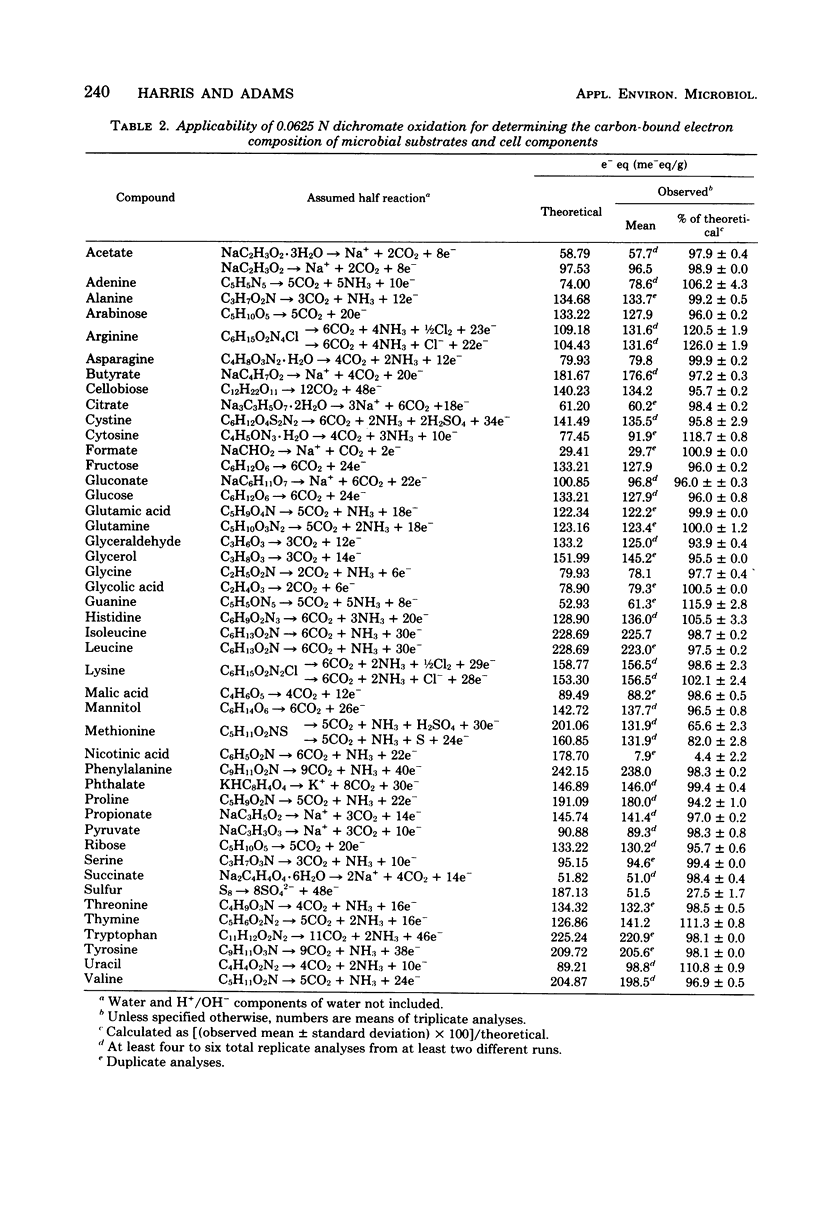
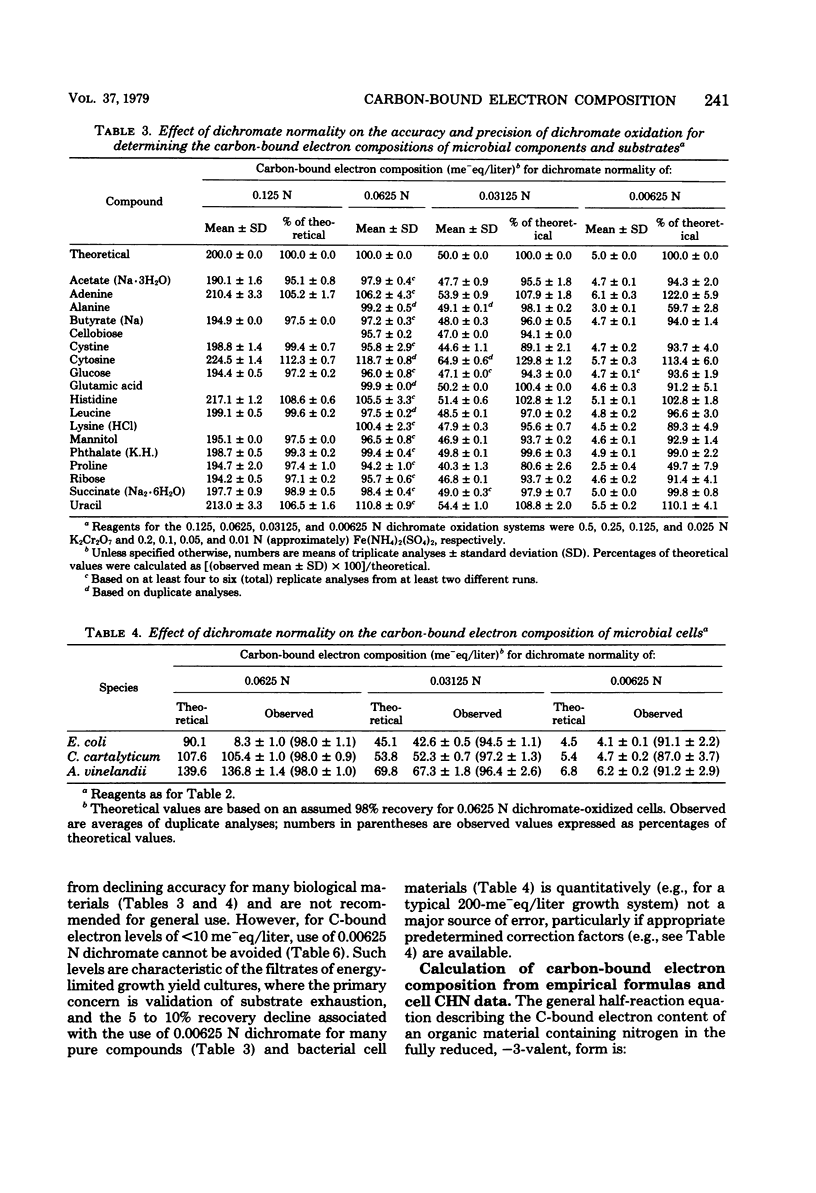
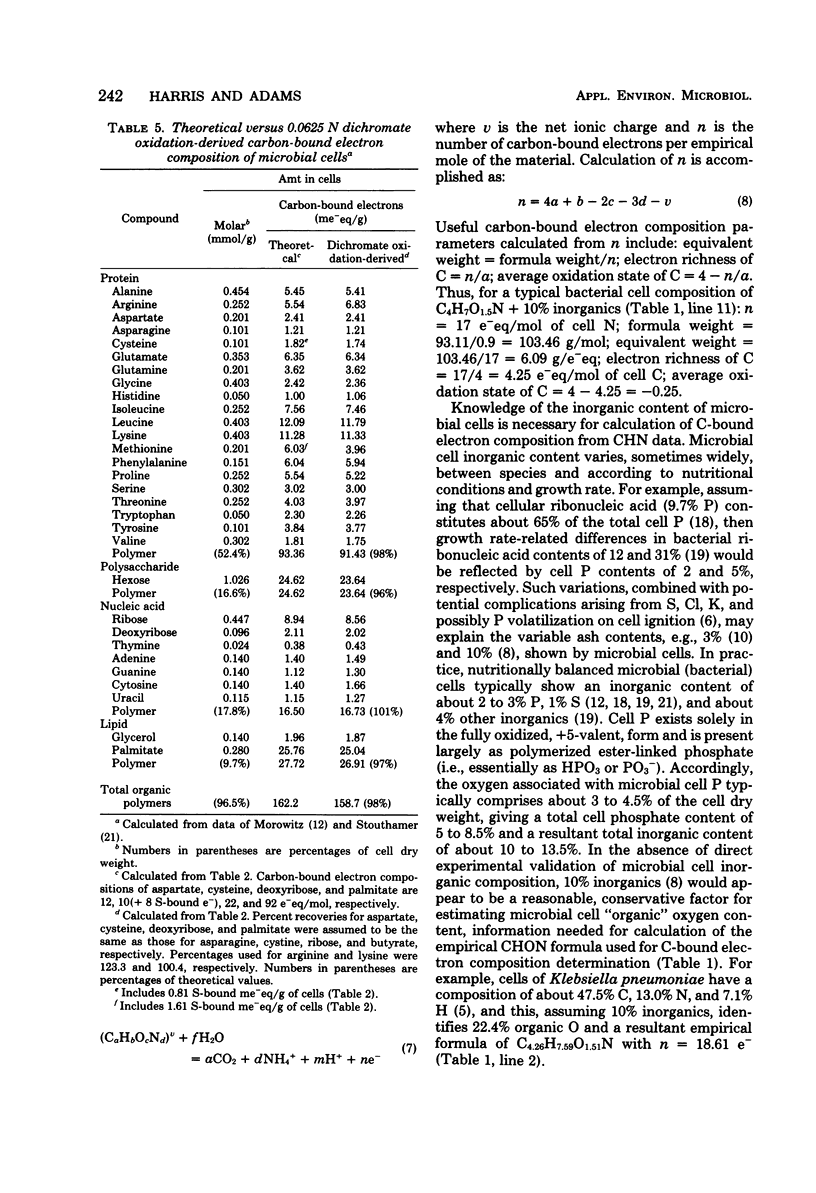
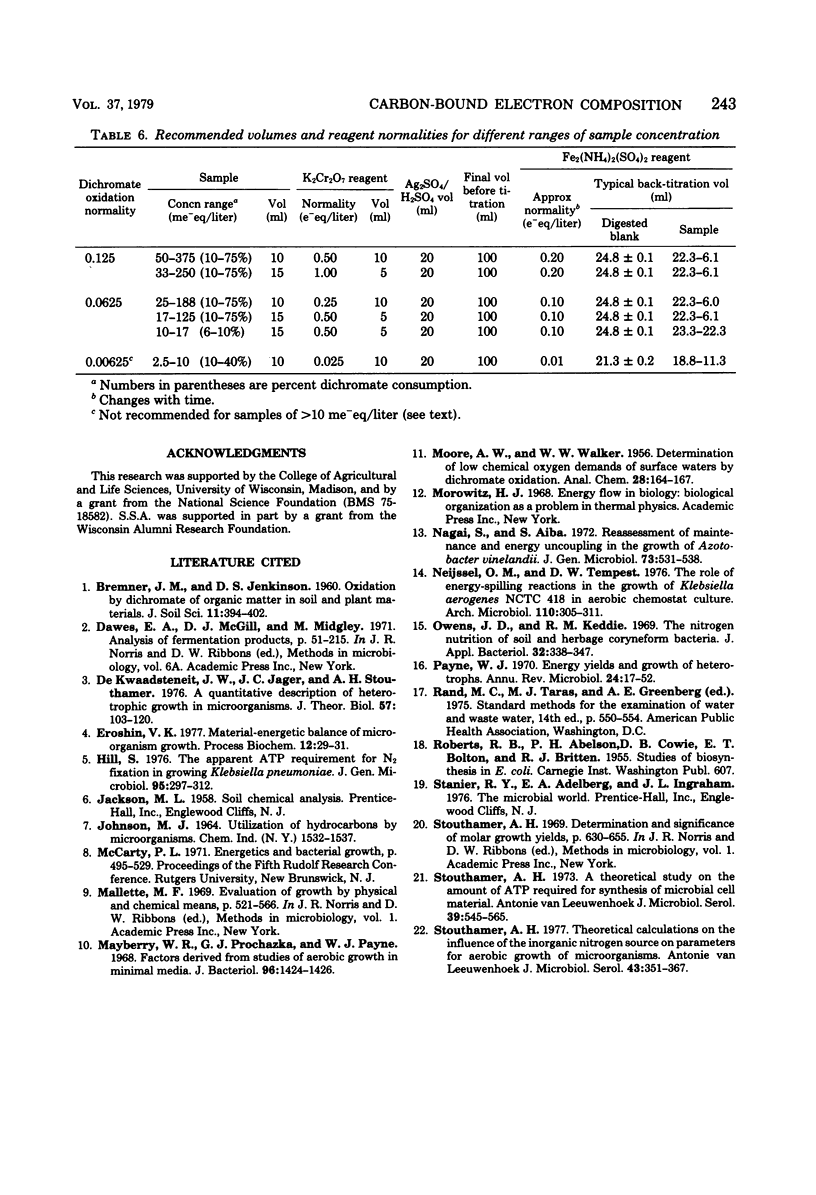
Selected References
These references are in PubMed. This may not be the complete list of references from this article.
- Hill S. The apparent ATP requirement for nitrogen fixation in growing Klebsiella pneumoniae. J Gen Microbiol. 1976 Aug;96(2):297–312. doi: 10.1099/00221287-95-2-297. [DOI] [PubMed] [Google Scholar]
- Mayberry W. R., Prochazka G. J., Payne W. J. Factors derived from studies of aerobic growth in minimal media. J Bacteriol. 1968 Oct;96(4):1424–1426. doi: 10.1128/jb.96.4.1424-1426.1968. [DOI] [PMC free article] [PubMed] [Google Scholar]
- Nagai S., Aiba S. Reassessment of maintenance and energy uncoupling in the growth of Azotobacter vinelandii. J Gen Microbiol. 1972 Dec;73(3):531–538. doi: 10.1099/00221287-73-3-531. [DOI] [PubMed] [Google Scholar]
- Neijssel O. M., Tempest D. W. The role of energy-spilling reactions in the growth of Klebsiella aerogenes NCTC 418 in aerobic chemostat culture. Arch Microbiol. 1976 Nov 2;110(23):305–311. doi: 10.1007/BF00690243. [DOI] [PubMed] [Google Scholar]
- Owens J. D., Keddie R. M. The nitrogen nutrition of soil and herbage coryneform bacteria. J Appl Bacteriol. 1969 Sep;32(3):338–347. doi: 10.1111/j.1365-2672.1969.tb00981.x. [DOI] [PubMed] [Google Scholar]
- Payne W. J. Energy yields and growth of heterotrophs. Annu Rev Microbiol. 1970;24:17–52. doi: 10.1146/annurev.mi.24.100170.000313. [DOI] [PubMed] [Google Scholar]
- Stouthamer A. H. A theoretical study on the amount of ATP required for synthesis of microbial cell material. Antonie Van Leeuwenhoek. 1973;39(3):545–565. doi: 10.1007/BF02578899. [DOI] [PubMed] [Google Scholar]
- Stouthamer A. H. Theoretical calculations on the influence of the inorganic nitrogen source on parameters for aerobic growth of microorganisms. Antonie Van Leeuwenhoek. 1977;43(3-4):351–367. doi: 10.1007/BF02313762. [DOI] [PubMed] [Google Scholar]
- de Kwaadsteniet J. W., Jager J. C., Stouthamer A. H. A quantitative description of heterotrophic growth in micro-organisms. J Theor Biol. 1976 Mar;57(1):103–120. doi: 10.1016/s0022-5193(76)80007-0. [DOI] [PubMed] [Google Scholar]


